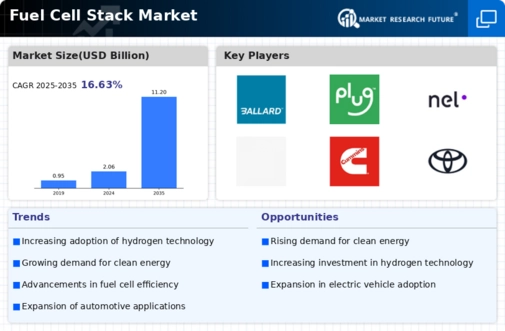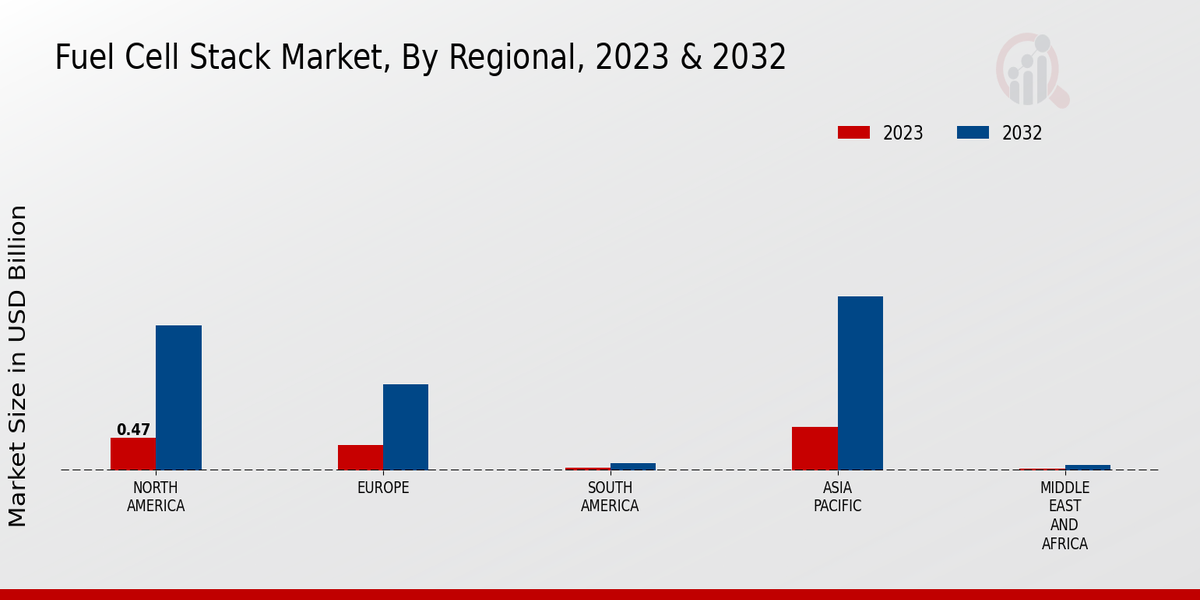Market Growth Projections
The Global Fuel Cell Stack Market Industry is poised for substantial growth, with projections indicating a market size of 2.06 USD Billion in 2024 and an anticipated increase to 11.2 USD Billion by 2035. The compound annual growth rate (CAGR) of 16.65% from 2025 to 2035 underscores the potential for expansion within the industry. This growth trajectory is influenced by various factors, including technological advancements, government support, and increasing investments in hydrogen infrastructure. As the global focus on clean energy intensifies, the fuel cell stack market is likely to experience significant developments and opportunities.
Government Support and Incentives
Government policies and incentives play a crucial role in fostering the growth of the Global Fuel Cell Stack Market Industry. Many countries are implementing favorable regulations and financial support mechanisms to encourage the adoption of fuel cell technologies. For example, tax credits, grants, and subsidies are being offered to manufacturers and consumers alike, thereby reducing the financial barriers associated with fuel cell deployment. This supportive environment is likely to stimulate market growth, as evidenced by the anticipated compound annual growth rate of 16.65% from 2025 to 2035, indicating a robust future for the industry.
Rising Adoption in Transportation Sector
The transportation sector is increasingly embracing fuel cell technologies, significantly impacting the Global Fuel Cell Stack Market Industry. With the automotive industry shifting towards zero-emission vehicles, fuel cells are gaining traction as a viable alternative to traditional internal combustion engines. Major automotive manufacturers are investing heavily in fuel cell development, leading to the introduction of fuel cell electric vehicles (FCEVs) in various markets. This trend is expected to contribute to the overall market growth, as the demand for cleaner transportation solutions continues to rise, aligning with global sustainability goals.
Growing Demand for Clean Energy Solutions
The increasing global emphasis on sustainable energy sources drives the demand for the Global Fuel Cell Stack Market Industry. Governments and organizations worldwide are actively pursuing cleaner alternatives to fossil fuels, leading to a notable shift towards hydrogen fuel cells. This transition is evidenced by various initiatives aimed at reducing carbon emissions. For instance, the Global Fuel Cell Stack Market is projected to reach 2.06 USD Billion in 2024, reflecting the rising adoption of fuel cell technologies across multiple sectors, including transportation and stationary power generation.
Increasing Investment in Hydrogen Infrastructure
The expansion of hydrogen infrastructure is pivotal for the advancement of the Global Fuel Cell Stack Market Industry. As the demand for hydrogen as a clean energy carrier rises, investments in production, storage, and distribution facilities are becoming more prevalent. This infrastructure development is essential for supporting fuel cell applications in transportation, industrial processes, and power generation. The growing recognition of hydrogen's potential as a sustainable energy source is likely to catalyze further investments, thereby enhancing the market's growth trajectory and ensuring the availability of necessary resources for fuel cell technologies.
Technological Advancements in Fuel Cell Technology
Innovations in fuel cell technology significantly enhance the efficiency and performance of fuel cell stacks, thereby propelling the Global Fuel Cell Stack Market Industry forward. Recent advancements include improvements in membrane materials and stack designs, which contribute to higher power densities and lower costs. These developments not only improve the viability of fuel cells in various applications but also attract investments in research and development. As a result, the market is expected to witness substantial growth, with projections indicating a rise to 11.2 USD Billion by 2035, showcasing the potential of advanced fuel cell technologies.

























